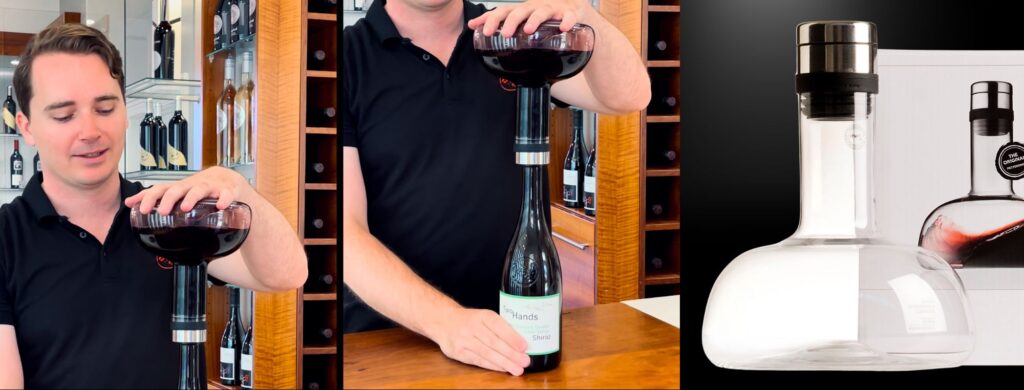The Art of Decanting Wine
Unveiling the Flavours and Aromas
Decanting wine is more than just an elegant ritual; it’s a practice that can elevate your wine experience to a whole new level. Whether you’re a seasoned connoisseur or a casual enthusiast, understanding the process of decanting and its impact on the flavours and aromas of your favourite wines can significantly enhance your enjoyment. At cellar door we decant every bottle opened form the Garden Series and above. These bigger, full bodied reds need some oxygen to help open up and release their flavours. It’s a topic many people ask us about, so we thought we would share some information with you and demystify decanting.
What is Decanting?
Decanting is the process of pouring wine from its original bottle into a separate container known as a decanter. This practice serves multiple purposes, primarily aimed at enhancing the wine’s character before it reaches your glass. The most common reason for decanting is to separate the liquid from any sediment that might have formed in older wines. Sediment, often harmless but unappetising, can negatively affect the taste and texture of the wine.
Aeration and Oxygenation
However, decanting goes beyond sediment removal. When wine comes into contact with air, it undergoes a process of aeration and oxygenation. This exposure to oxygen allows the wine’s complex flavours and aromas to unfold and develop more fully. Younger, bolder wines often benefit from this process, as it can help soften harsh tannins and mellow out intense aromas.
The Ritual of Decanting
Decanting wine is also a visual and sensory experience. If you have seen our cellar door staff decant our wines in to the Wine Breather you would understand. The act of pouring the wine into a beautifully designed decanter adds an element of sophistication to any gathering. As the wine cascades down the sides of the decanter, its colours and textures come alive, hinting at the richness that lies within.

When and How to Decant
The decision to decant varies depending on the type of wine. Generally, older red wines with sediment should be decanted an hour or two before serving to allow the sediment to settle. Younger red wines and even some white wines can benefit from a shorter decanting time, anywhere from 15 minutes to half an hour.
To decant, follow these simple steps:
1. Choose the Right Decanter: Select a decanter with a broad base and a wide neck, allowing for better aeration.
2. Position the Bottle: Keep the wine bottle upright for a few hours before decanting, allowing the sediment to settle at the bottom.
3. Pour Slowly: Gently pour the wine into the decanter, ensuring a smooth and controlled pour to minimise disturbing any sediment.
4. Enjoy: After you have decanted you can either serve the wine directly from the decanter or pour it back into the original bottle. This is known as double decanting.
Decanting wine is a practice that marries elegance with functionality, transforming your wine-drinking experience into a journey of the senses. Whether it’s an older vintage that needs to be freed from sediment or a younger wine that requires a bit of aeration, the art of decanting holds the potential to unlock the full potential of every sip. So, the next time you uncork a bottle, consider the magic that decanting can bring to your glass.









